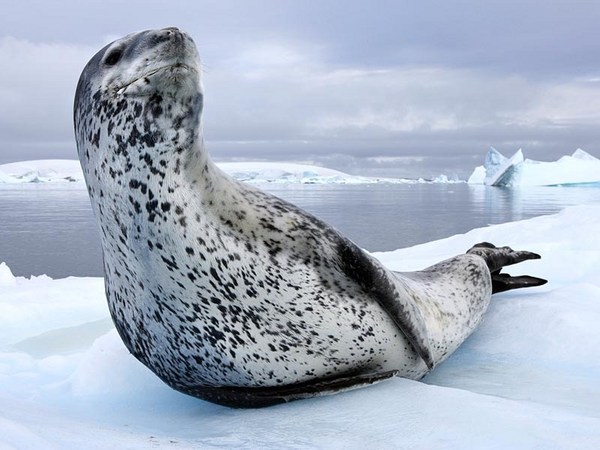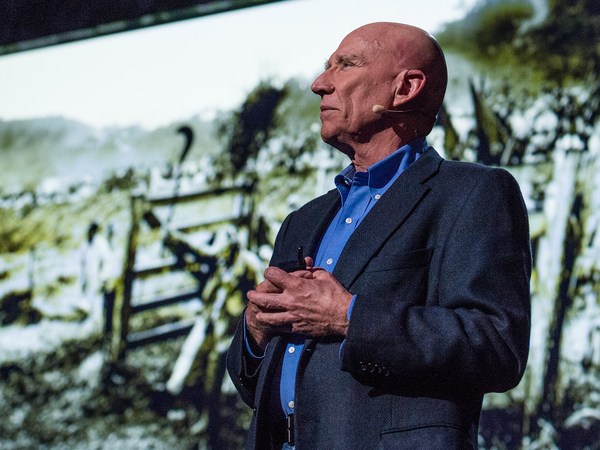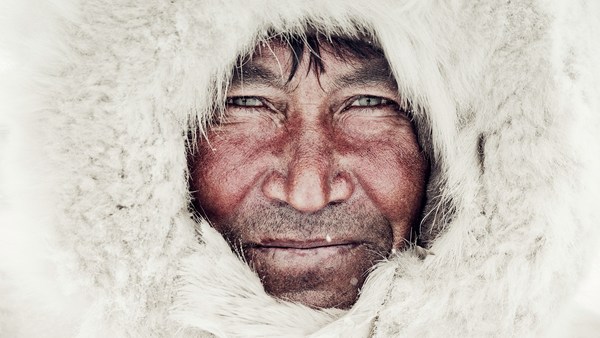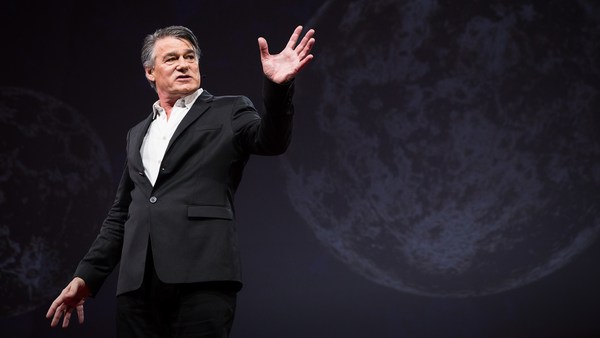So if I told you that this was the face of pure joy, would you call me crazy? I wouldn't blame you, because every time I look at this Arctic selfie, I shiver just a little bit. I want to tell you a little bit about this photograph.
I was swimming around in the Lofoten Islands in Norway, just inside the Arctic Circle, and the water was hovering right at freezing. The air? A brisk -10 with windchill, and I could literally feel the blood trying to leave my hands, feet and face, and rush to protect my vital organs. It was the coldest I've ever been. But even with swollen lips, sunken eyes, and cheeks flushed red, I have found that this place right here is somewhere I can find great joy.
Now, when it comes to pain, psychologist Brock Bastian probably said it best when he wrote, "Pain is a kind of shortcut to mindfulness. It makes us suddenly aware of everything in the environment. It brutally draws us in to a virtual sensory awareness of the world much like meditation."
If shivering is a form of meditation, then I would consider myself a monk. (Laughter)
Now, before we get into the why would anyone ever want to surf in freezing cold water? I would love to give you a little perspective on what a day in my life can look like.
(Music)
(Video) Man: I mean, I know we were hoping for good waves, but I don't think anybody thought that was going to happen. I can't stop shaking. I am so cold.
(Music)
(Applause)
Chris Burkard: So, surf photographer, right? I don't even know if it's a real job title, to be honest. My parents definitely didn't think so when I told them at 19 I was quitting my job to pursue this dream career: blue skies, warm tropical beaches, and a tan that lasts all year long. I mean, to me, this was it. Life could not get any better. Sweating it out, shooting surfers in these exotic tourist destinations. But there was just this one problem. You see, the more time I spent traveling to these exotic locations, the less gratifying it seemed to be. I set out seeking adventure, and what I was finding was only routine. It was things like wi-fi, TV, fine dining, and a constant cellular connection that to me were all the trappings of places heavily touristed in and out of the water, and it didn't take long for me to start feeling suffocated.
I began craving wild, open spaces, and so I set out to find the places others had written off as too cold, too remote, and too dangerous to surf, and that challenge intrigued me. I began this sort of personal crusade against the mundane, because if there's one thing I've realized, it's that any career, even one as seemingly glamorous as surf photography, has the danger of becoming monotonous.
So in my search to break up this monotony, I realized something: There's only about a third of the Earth's oceans that are warm, and it's really just that thin band around the equator. So if I was going to find perfect waves, it was probably going to happen somewhere cold, where the seas are notoriously rough, and that's exactly where I began to look. And it was my first trip to Iceland that I felt like I found exactly what I was looking for.
I was blown away by the natural beauty of the landscape, but most importantly, I couldn't believe we were finding perfect waves in such a remote and rugged part of the world. At one point, we got to the beach only to find massive chunks of ice had piled on the shoreline. They created this barrier between us and the surf, and we had to weave through this thing like a maze just to get out into the lineup. and once we got there, we were pushing aside these ice chunks trying to get into waves. It was an incredible experience, one I'll never forget, because amidst those harsh conditions, I felt like I stumbled onto one of the last quiet places, somewhere that I found a clarity and a connection with the world I knew I would never find on a crowded beach.
I was hooked. I was hooked. (Laughter) Cold water was constantly on my mind, and from that point on, my career focused on these types of harsh and unforgiving environments, and it took me to places like Russia, Norway, Alaska, Iceland, Chile, the Faroe Islands, and a lot of places in between. And one of my favorite things about these places was simply the challenge and the creativity it took just to get there: hours, days, weeks spent on Google Earth trying to pinpoint any remote stretch of beach or reef we could actually get to. And once we got there, the vehicles were just as creative: snowmobiles, six-wheel Soviet troop carriers, and a couple of super-sketchy helicopter flights. (Laughter) Helicopters really scare me, by the way.
There was this one particularly bumpy boat ride up the coast of Vancouver Island to this kind of remote surf spot, where we ended up watching helplessly from the water as bears ravaged our camp site. They walked off with our food and bits of our tent, clearly letting us know that we were at the bottom of the food chain and that this was their spot, not ours. But to me, that trip was a testament to the wildness I traded for those touristy beaches.
Now, it wasn't until I traveled to Norway -- (Laughter) -- that I really learned to appreciate the cold. So this is the place where some of the largest, the most violent storms in the world send huge waves smashing into the coastline. We were in this tiny, remote fjord, just inside the Arctic Circle. It had a greater population of sheep than people, so help if we needed it was nowhere to be found. I was in the water taking pictures of surfers, and it started to snow. And then the temperature began to drop. And I told myself, there's not a chance you're getting out of the water. You traveled all this way, and this is exactly what you've been waiting for: freezing cold conditions with perfect waves. And although I couldn't even feel my finger to push the trigger, I knew I wasn't getting out. So I just did whatever I could. I shook it off, whatever. But that was the point that I felt this wind gush through the valley and hit me, and what started as this light snowfall quickly became a full-on blizzard, and I started to lose perception of where I was. I didn't know if I was drifting out to sea or towards shore, and all I could really make out was the faint sound of seagulls and crashing waves.
Now, I knew this place had a reputation for sinking ships and grounding planes, and while I was out there floating, I started to get a little bit nervous. Actually, I was totally freaking out -- (Laughter) -- and I was borderline hypothermic, and my friends eventually had to help me out of the water. And I don't know if it was delirium setting in or what, but they told me later I had a smile on my face the entire time.
Now, it was this trip and probably that exact experience where I really began to feel like every photograph was precious, because all of a sudden in that moment, it was something I was forced to earn. And I realized, all this shivering had actually taught me something: In life, there are no shortcuts to joy. Anything that is worth pursuing is going to require us to suffer just a little bit, and that tiny bit of suffering that I did for my photography, it added a value to my work that was so much more meaningful to me than just trying to fill the pages of magazines. See, I gave a piece of myself in these places, and what I walked away with was a sense of fulfillment I had always been searching for.
So I look back at this photograph. It's easy to see frozen fingers and cold wetsuits and even the struggle that it took just to get there, but most of all, what I see is just joy.
Thank you so much.
(Applause)





